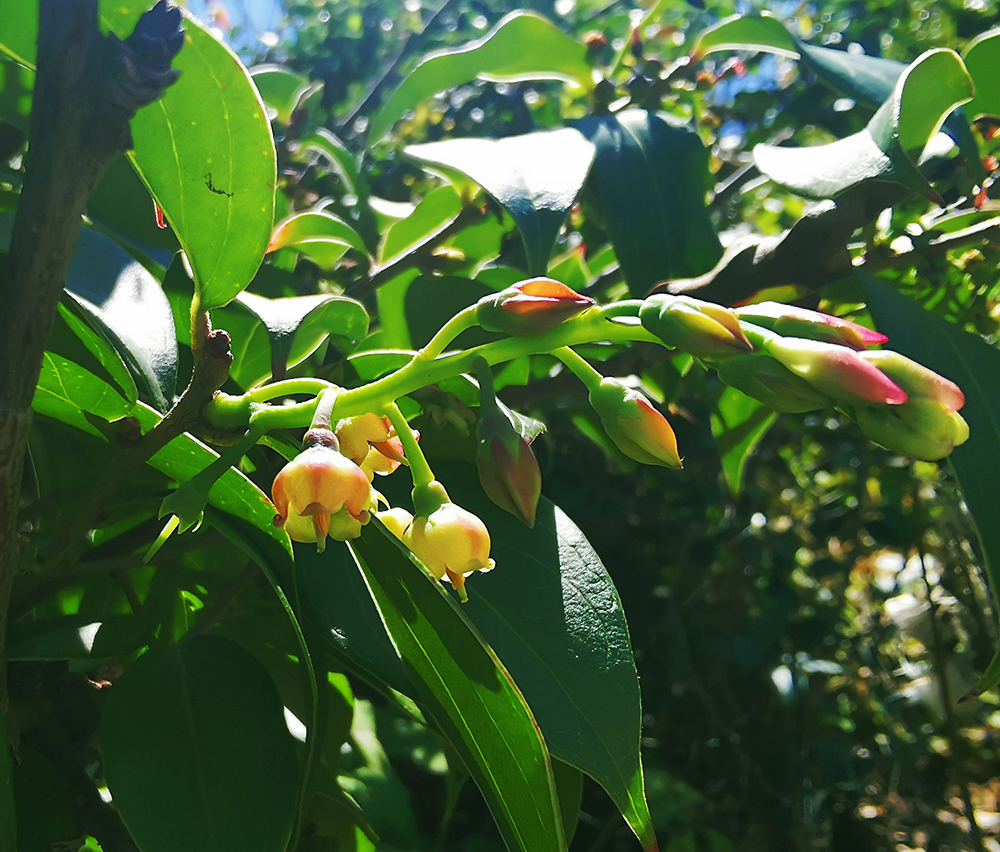

Optimization of Cell Suspension Culture Conditions of Vaccinium dunalianum
Received date: 2021-04-27
Accepted date: 2021-11-24
Online published: 2021-11-24
To increase the biomass of suspension culture of Vaccinium dunalianum, we used callus induced from leaves as start material, and investigated the effects of sucrose concentration, pH value, culture medium volume, initial inoculation size, and shaking speed using single factor experiment method. We optimized the suspension culture conditions using Box-Behnken response surface methodology. Our results showed that the optimal conditions for cell suspension culture were: 40 g·L-1 sucrose, pH5.2, culture medium volume 45 mL, callus inoculation size of 2.64 g, and shaking speed of 149 r·min-1 based on the improved WPM medium. Under these optimal conditions, the dried cell biomass was 0.184 4 g which was close to the theoretical prediction of 0.184 5 g, and the growth curve of cells showed ‘S’ type. These results provide a basis for further study on the regulation of the secondary metabolites of cell suspension culture in V. dunalianum.

Churan Li , Ling Fu , Yun Liu , Xiaoqin Yang , Guolei Zhu , Sida Xie , Huancheng Ma , Ping Zhao . Optimization of Cell Suspension Culture Conditions of Vaccinium dunalianum[J]. Chinese Bulletin of Botany, 2022 , 57(2) : 227 -235 . DOI: 10.11983/CBB21069
| [1] | 陈继光, 上官新晨, 尹忠平, 任民红, 付晓 (2014). 青钱柳悬浮细胞的培养及其基质消耗的规律. 现代食品科技 30(1), 44-49, 107. |
| [2] | 董燕, 刁玲武, 周联 (2011). 药用植物细胞悬浮培养的影响因素. 中医药信息 28(3), 36-40. |
| [3] | 付羚, 张訸, 罗旭璐, 尚俊可, 唐军荣, 赵平 (2019). 樟叶越桔愈伤组织诱导及其细胞悬浮培养体系建立. 西部林业科学 48, 119-124, 130. |
| [4] | 谷贵章, 殷晓敏 (2006). 金丝桃细胞悬浮培养条件的优化. 食品与药品 8(11), 31-34. |
| [5] | 郭紫娟 (2015). 白背三七悬浮细胞培养体系的建立. 农技服务 32(10), 90-92. |
| [6] | 江苏省植物研究所 (1991). 新华本草纲要(第二册). 上海: 上海科学技术出版社. pp. 358-360. |
| [7] | 李萍, 董亚辉, 李成龙, 何雨龙, 李明军 (2020). 怀牛膝细胞悬浮培养条件的优化. 植物学报 55, 90-95. |
| [8] | 李蕤, 谭晓芳, 陈群, 樊家荣 (2011). 霍山石斛细胞悬浮培养及条件优化. 中草药 42, 358-362. |
| [9] | 李宗艳 (2004). 石竹细胞悬浮培养研究. 广西植物 24, 266- 269. |
| [10] | 梁雪, 张佳薇, 赵兴堂, 何利明, 康雪, 詹亚光 (2018). 水曲柳松散愈伤组织的悬浮培养和超低温保存. 分子植物育种 16, 5376-5385. |
| [11] | 廖礼佳, 李祥会, 杨军, 伍春莲 (2013). 长春花悬浮培养条件的优化. 西华师范大学学报(自然科学版) 34, 252-255. |
| [12] | 刘思妤, 杨悦, 王鹰, 王丽娟, 吴秀菊 (2017). 北细辛悬浮培养体系的建立及优化. 草业科学 34, 2254-2260. |
| [13] | 栾林莉, 宋玉凤, 侯辛辛, 陈健妙 (2019). 巴西橡胶树体胚胚性愈伤组织悬浮系的建立和植株再生. 分子植物育种 17, 2614-2621. |
| [14] | 罗旭璐, 唐军荣, 李娜, 丁勇, 张德国, 马焕成, 赵平 (2014). 樟叶越桔的组织培养与快速繁殖. 植物生理学报 50, 1717- 1720. |
| [15] | 毛堂芬, 颜谦, 方周伯 (1994). 蔗糖和硝酸铵对黄连悬浮培养细胞生长和小檗碱含量的影响. 生物技术 4(3), 33-35. |
| [16] | 孙国政, 马江, 曹磊, 陆攀科, 罗俏俏, 张忠明 (2017). 天山雪莲细胞液体悬浮培养基的优化研究. 中国食品工业 (11), 68-71. |
| [17] | 王玲, 李琰, 代伟娜, 严静, 张朝红 (2018). 葡萄细胞悬浮培养体系的建立和优化. 生物技术通报 34(8), 80-86. |
| [18] | 吴燕燕, 李明, 马婷玉, 段修冉, 潘丽萍 (2018). 白木香悬浮细胞培养的研究. 中药材 41, 1044-1047. |
| [19] | 邢建民, 赵德修, 李茂寅, 叶和春, 李国凤, 李佐虎 (1999). 碳源和氮源对水母雪莲悬浮培养细胞生长和黄酮合成的影响. 生物工程学报 15, 230-234. |
| [20] | 徐志荣, 王婷, 娄佳兰, 魏赛金 (2019). 南方红豆杉细胞悬浮培养体系优化及动力学研究. 林业科学研究 32(1), 8-14. |
| [21] | 颜昌敬 (1990). 植物组织培养手册. 上海: 上海科学技术出版社. pp. 117-133. |
| [22] | 闫静辉, 张小兵, 李亚璞, 李春生, 吴萌, 陈英珠, 程华, 籍宝霞, 陈瑞琴 (2005). 西洋参悬浮细胞系的建立及其生长特性的研究. 河北省科学院学报 22(4), 23-26, 36. |
| [23] | 张进仁, 陈善春, 高峰 (1993). 柑桔细胞悬浮培养及再生植株的研究. 热带作物学报 14(2), 67-70. |
| [24] | 赵继鹏, 杨淑慎 (2014). 曼地亚红豆杉细胞悬浮培养体系的建立. 西北农林科技大学学报(自然科学版) 42(1), 189-195. |
| [25] | 中国科学院中国植物志编辑委员会 (1991). 中国植物志, 第57卷(第3分册). 北京: 科学出版社. pp. 93. |
| [26] | 邹璐, 何钢, 刘贤桂, 张虹, 席飞飞, 叶生宝 (2019). 仙茅愈伤组织诱导和细胞悬浮培养体系的建立. 分子植物育种 17, 5383-5389. |
| [27] | Iborra JL, Guardiola J, Montaner S, Cánovas M, Manjón A (1992). 2,3,5-triphenyltetrazolium chloride as a viability assay for immobilized plant cells. Biotechnol Tech 6, 319- 322. |
| [28] | Jeandet P, Clément C, Courot E (2014). Resveratrol production at large scale using plant cell suspensions. Eng Life Sci 14, 622-632. |
| [29] | Li N, Zeng WL, Luo XL, Yang CR, Zhang YJ, Ding Y, Zhao P (2018). A new arbutin derivative from the leaves of Vaccinium dunalianum Wight. Nat Prod Res 32, 65-70. |
| [30] | Pérez-González MZ, Nieto-Trujillo A, Gutiérrez-Rebolledo GA, García-Martínez I, Estrada-Zúñiga ME, Bernabé-Antonio A, Jiménez-Arellanes MA, Cruz-Sosa F (2019). Lupeol acetate production and antioxidant activity of a cell suspension culture from Cnidoscolus chayamansa leaves. South Afr J Bot 125, 30-38. |
| [31] | Shekhawat MS, Shekhawat NS (2011). Micropropagation of Arnebia hispidissima (Lehm). DC. and production of alkannin from callus and cell suspension culture. Acta Physiol Plant 33, 1445-1450. |
| [32] | Verpoorte R, Contin A, Memelink J (2002). Biotechnology for the production of plant secondary metabolites. Phytochem Rev 1, 13-25. |
| [33] | Xu M, Lao QC, Zhao P, Zhu XY, Zhu HT, Luo XL, Yang CR, He JH, Li CQ, Zhang YJ (2014). 6'-O-caffeoylarbutin inhibits melanogenesis in zebrafish. Nat Prod Res 28, 932- 934. |
| [34] | Zhao P, Tanaka T, Hirabayashi K, Zhang YJ, Yang CR, Kouno I (2008). Caffeoyl arbutin and related compounds from the buds of Vaccinium dunalianum. Phytochemistry 69, 3087-3094. |
/
| 〈 |
|
〉 |